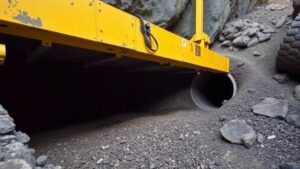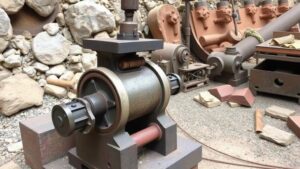The Connection Between Water Dowsing and Placer Gold Discovery
The Connection Between Water Dowsing and Placer Gold Discovery
Water dowsing and placer gold discovery may seem unrelated at first glance. But, both practices share a common thread: the quest for natural resources beneath the Earths surface. This article explores how dowsing techniques can assist in locating not only water but also placer gold deposits, examining historical contexts, methodologies, and scientific scrutiny.
Understanding Water Dowsing
Water dowsing, often referred to as water witching, is an ancient practice where individuals, known as dowsers, use specific tools–most commonly forked sticks, rods, or pendulums–to locate underground water sources. This technique relies on the belief in a humans ability to sense subtle energetic changes in the environment.
Though exact mechanisms remain speculative, anecdotal evidence and some scientific studies point to the practices potential efficacy. For example, a survey conducted by the International Water Association found that dowsers reported a success rate of approximately 75% in locating water sources, although controlled studies often yield less favorable results.
The Art of Placer Gold Discovery
Placer gold refers to gold found in alluvial deposits–loose material that has been eroded from its original source. Historically, the discovery of placer gold has played a significant role in shaping economies and entire regions, particularly during events like the California Gold Rush of 1849.
To locate placer gold, prospectors use a combination of geological knowledge and traditional prospecting methods such as panning and sluicing. Understanding river dynamics, sediment transport, and the locations where gold is likely to accumulate is crucial for efficient gold recovery.
Parallels Between Dowsing and Gold Discovery
Both dowsing for water and searching for placer gold involve identifying environmental clues. Dowsers often focus on areas where geological features suggest the presence of underground water. Similarly, prospectors look for specific geological signs indicative of gold deposition, such as:
- Presence of gravel bars
- Changes in river flow
- Vegetative patterns that suggest moisture
Interestingly, many dowsers have reported successful searches near historical placer gold locations, suggesting a potential, albeit anecdotal, connection. For example, during the Klondike Gold Rush, dowsers were employed by some prospectors to locate potential sites for gold recovery, often near freshwater sources.
Empirical Evidence and Scientific Scrutiny
The scientific community is often skeptical of dowsing due to a lack of reproducible evidence validating its effectiveness. But, some studies have suggested a possible correlation between dowsing results and groundwater presence. For example, a study published in the journal Hydrogeology Journal found that dowsing predictions had a statistically significant correlation with actual water sources in certain regions.
On the other hand, the linkage between dowsing and gold discovery lacks robust scientific backing. Gold is typically located through geological surveys and studies rather than intuitive dowsing techniques. Nonetheless, some anecdotal instances persist, where practical gold prospecting benefits from water dowsing as it allows for the identification of nearby water sources critical for processing gold-bearing material.
Real-World Applications
In remote areas or regions lacking sophisticated geological surveying technology, prospectors may still utilize dowsing as an inexpensive method to identify promising sites. For example, in parts of South America and Africa, local miners often incorporate dowsing into their toolkit alongside conventional methods.
Plus, as water is a crucial resource for gold extraction, successfully locating water through dowsing can significantly enhance a prospectors ability to sustain operations, thereby indirectly linking the two practices.
Conclusion: Actionable Takeaways
While the connection between water dowsing and placer gold discovery may not be fully substantiated scientifically, the practices share methodologies and applications that can be mutually beneficial. Prospective miners can consider:
- Integrating dowsing into their exploration methods, particularly in remote areas.
- Focusing on geological features that suggest both water and placer gold deposits.
- Utilizing local knowledge and traditional practices as part of a holistic approach to resource discovery.
Ultimately, understanding both dowsing and placer gold prospecting can lead to more effective and sustainable exploration strategies in resource-rich environments.


